
views
Exploring Types of Symbolism
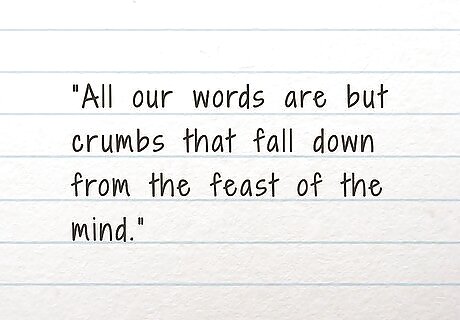
Use physical objects as a metaphor for an intangible concept. In general, symbols are used as a metaphor for an idea, like love, anger, or freedom. Start with a strong understanding of your characters and story. Then think about symbols that represent ideas you have already written about, or at least thought about. Symbols can represent small or large ideas. Try starting with something small. Describing a character who is prone to anger as wearing bright red can help your reader make a visual connection to a personality trait.
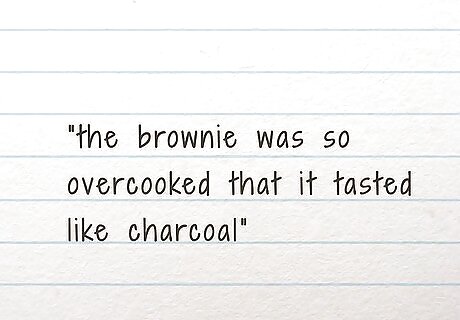
Make direct connections using similes. A simile compares 2 things using the words "like" or "as." For example, you can say that a character is "as stubborn as an ox." Using a simile, you can give your character a quality and bring it to life using an unexpected visual. While metaphors connect a symbol subtly and indirectly to a story or a character, a simile is a much more direct way to make a connection.
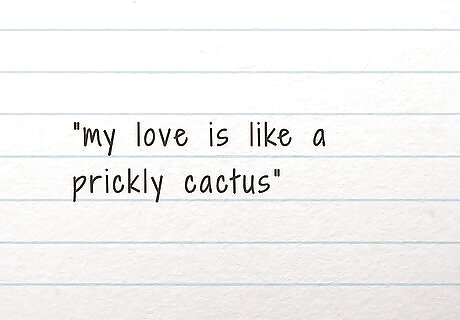
Represent emotion using symbols. Symbolism allows writers to describe emotions in a way that will resonate with readers. Rather than telling how the character feels, using symbolism allows the reader to step into the shoes of the character and imagine how they are feeling. You don't need to use symbolism to describe every emotional moment. Save it for especially poignant moments.
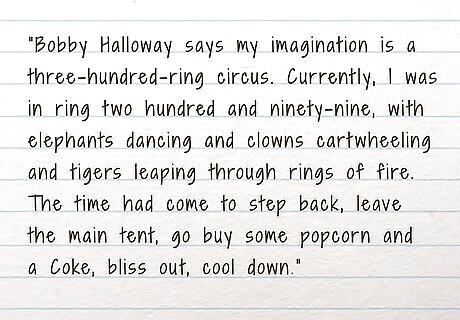
Connect recurring themes in your story with symbolic motifs. Take a look at the kinds of big themes you are exploring through your story and find symbols that represent those themes. For example, if a character longs for freedom, use imagery of birds throughout the story. Using symbols to represent themes, rather than a character, is a good way to incorporate symbolism without being too heavy-handed.
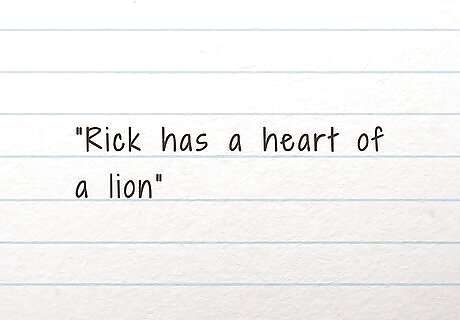
Use universal symbols to signal important information to readers. Some symbols have been used by writers for so long that readers will automatically know what they mean when you use them. Examples include doves to symbolize peace, water to symbolize cleansing or a fresh start, and storms to signal impending doom. Using too many universal symbols can come off as cliché.
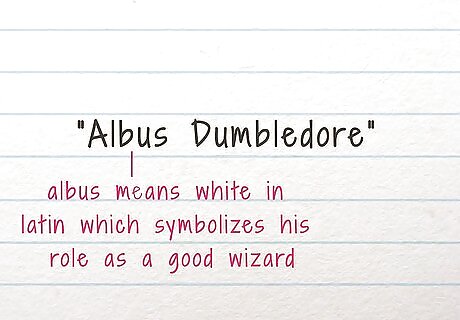
Hide symbolism by using hard-to-spot references. Symbolism can be an obvious, universal signal, or you can make it more layered and hard to find. Use a small detail or an obscure reference to foreshadow an event or make a statement about a character for extra-keen readers. For example, in Harry Potter, the character Albus Dumbledore's first name comes from the Latin word for white. This symbolizes his role as a good wizard, but wouldn't be obvious to every reader. If you aren't sure where to start, use a symbol that is personal to you, like the name of a character from one of your favorite books or an object from your childhood.
Practicing Using Symbolism

Write an allegorical story with lots of symbols. In order to practice using symbolism in your writing, try your hand at an allegorical story. In an allegory, the entire story is a symbol for a larger idea, with characters representing concepts like "good" and "evil." Allegories are often used to showcase morals, with a good character triumphing over evil, or tragedy befalling a character who doesn't follow the rules of society. Fairytales like Aesop's Fables are good examples of allegories. Read a few different ones to get an idea of what allegories look like.
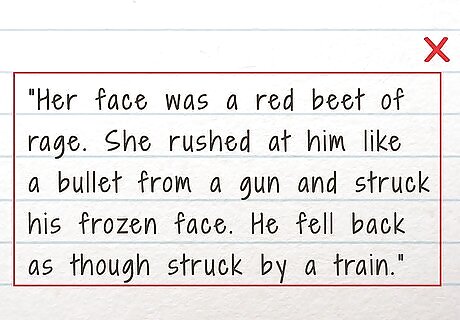
Avoid overusing symbolism in your writing. Unless you are writing an allegory, it is important to strike a good balance between literal descriptions and symbolism. Effective symbolism blends into the story seamlessly and supports the story rather than being the main focus. If you think you may be using too much symbolism, ask yourself if your story would still be engaging without the symbolism. If not, work on fleshing out the characters and the plot and toning down the symbolism.

Represent a goal or dream with symbolism. A character's dreams can be a powerful motivator for your story, but you can let your readers interpret deeper meanings to seemingly superficial dreams. For example, a character might want to own a house–a fairly common goal. But the house might represent a deeper concept of home that the character has been lacking. Goals can be concrete or abstract. Either way, you, the writer, should have a deep understanding of your character's motivations.
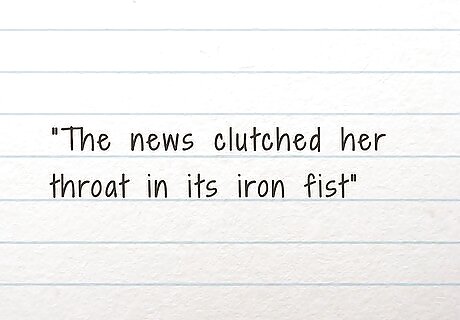
Tell the reader how your character is feeling using symbols. If you want to describe how your character is feeling without saying it outright, use a symbol to convey emotions in a more poetic way. As an example, if a character is feeling dread about an impending event, describe a storm on the horizon. This will give your story atmosphere. You can also use a recurring symbol to create an emotional response. A classic example is the green light in The Great Gatsby that represents longing. Over the course of the story, the symbol becomes more and more meaningful.
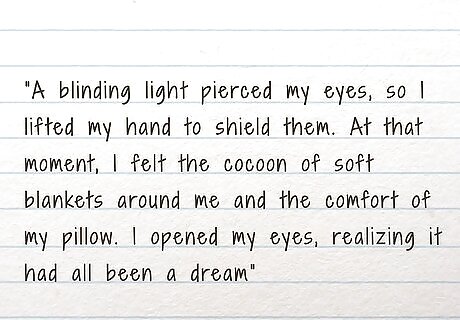
End a story on an ambiguous note to let readers interpret the symbolism. You can use symbolism as a tool to leave a scene up to the reader to interpret. Instead of telling your reader about an action or motivation, hint at it with a symbol and let the reader draw their own conclusions. For example, if you don't want to end your story with the death of a character, try describing a natural ending like a sunset or winter.

Let symbols emerge naturally. Lots of writers will use symbols in their writing without realizing it or even intending to. Read back over your own writing to look for places in your own writing when you used symbolism. Once you see where you use symbolism unconsciously, strengthen it by making it more intentional. For example, if you find yourself using weather imagery over and over again, take a closer look at where you are using that imagery. Does it seem to reflect how your characters are feeling? Try expanding your descriptions or being more intentional about the placement of the imagery so that readers can make the connection to emotion.



















Comments
0 comment